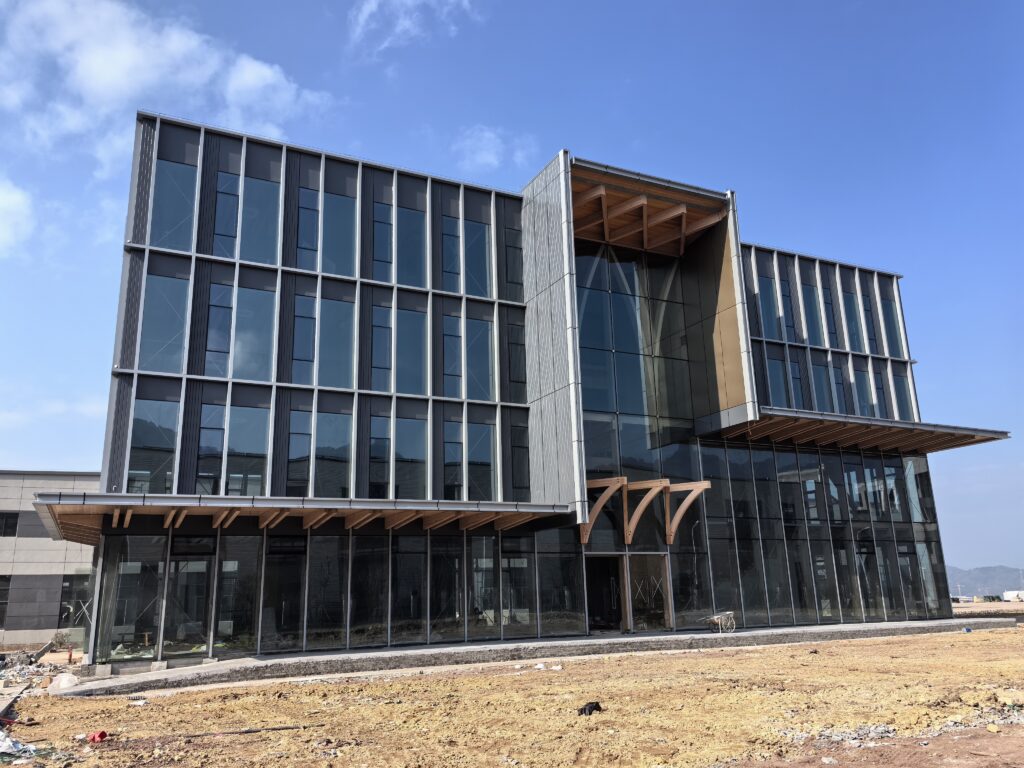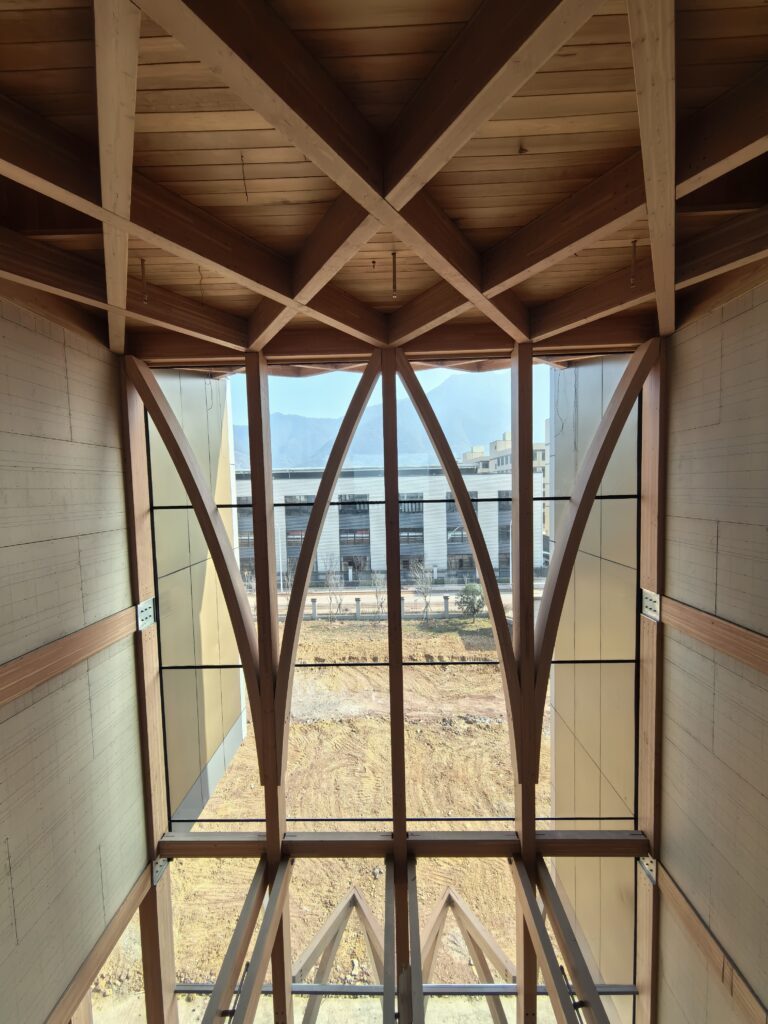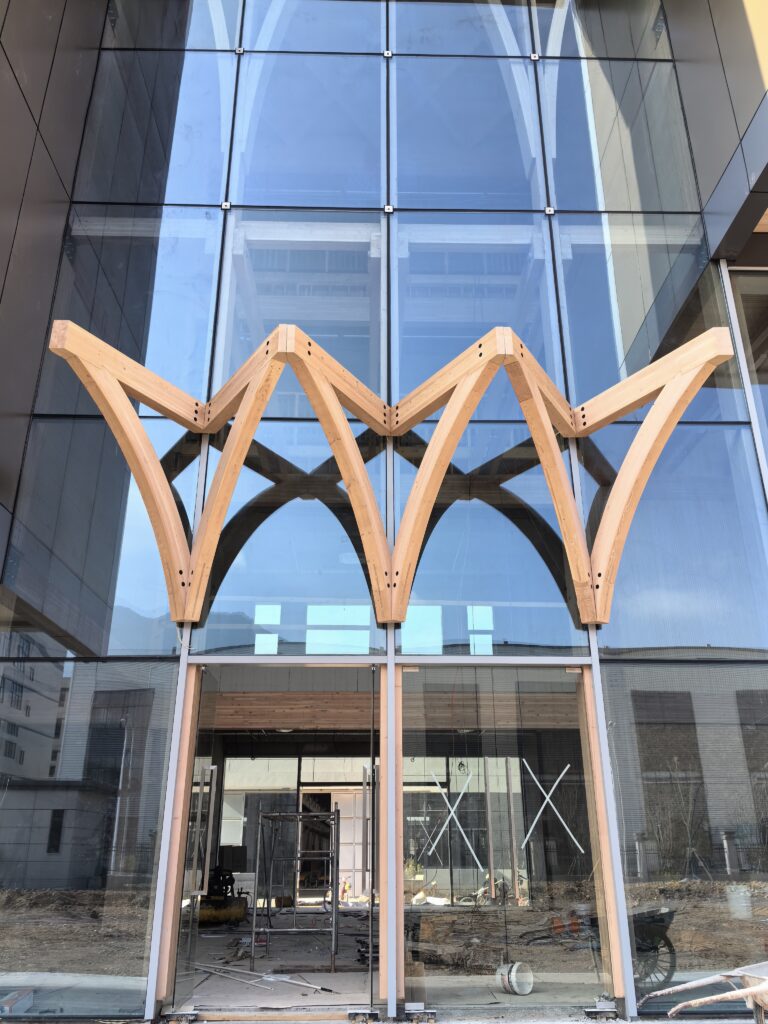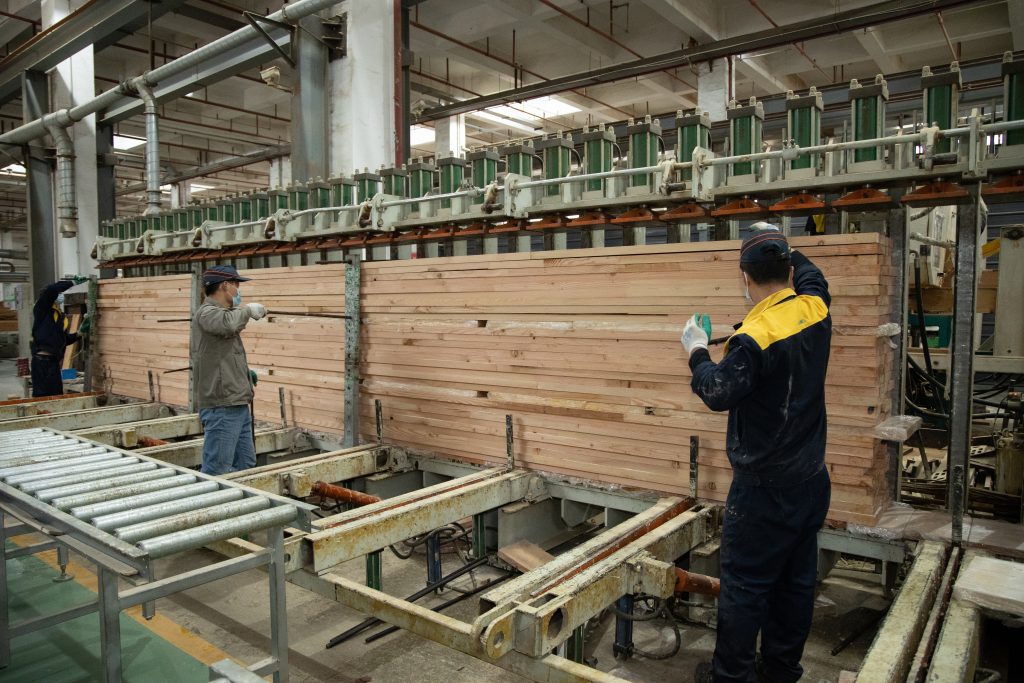Integrating Innovation: The Lishui Office Building and Its Canadian Glulam Hybrid Design
Located in Lishui City within the Zhejiang province, a groundbreaking office building has been introduced as a beacon of innovation in the construction field. This structure has been developed for the Lishui Yuanli Green Building Technology Company, a wood construction builder and glulam (glued laminated timber) manufacturer as its new office space. The project design is spearheaded by Shanghai Green Architects Ltd. with a clear objective: to demonstrate the viability and effectiveness of employing mass timber in the construction of large-scale commercial office buildings. Canada Wood provided the full support during the design and construction.

Hybrid Design: architecturally expressive, functionally effective
The building itself is a marvel of hybrid design, stretching over four floors and encompassing an area of 2200 square meters. At its heart lies a concrete core, which is encircled by a sophisticated glulam post-and-beam framework, all of which is encapsulated by a glass curtain wall façade. This design strategy yields numerous benefits, most notably the harmonious integration of various materials to bolster the building’s structural integrity and performance. The architecture features a comprehensive network of structural columns interconnected with an array of beam-to-column joints, facilitating the creation of varied ceiling forms and the efficient utilization of space. It ingeniously merges the structural and aesthetic virtues of wood with economically viable construction methods.


Every facet of the building’s design, from the strategic placement of columns and beams to the seamless integration of utilities, has been meticulously planned. This attention to detail ensures that the building is not just functional but also visually striking, serving as a testament to the seamless integration of traditional and contemporary design principles.


Quality Matters
China’s glulam industry is expanding rapidly with many notable projects. The sector has witnessed several significant projects, such as the Tianfu International Conference Center and the Dingchi office building—a six-story mass timber office structure—that showcase the vast potential of mass timber in contemporary construction. Many of these projects are designed and engineered by some of China’s top architects and engineers, such as Mr. Cui Kai, who designed the Taiyuan Botanical Garden project. However, rapid expansion is invariably accompanied by challenges. Despite the swift growth of the glulam industry in China, it faces significant challenges related to production capacity and the consistency of product quality, largely due to a fragmented market devoid of a universally recognized system for quality assurance. Currently, China houses over 20 glulam producers, many of which are small-scale operations that suffer from variable performance levels. As the demand for wood structures in larger and taller buildings increases, the quality of domestic glulam production has emerged as a critical constraint on the sector’s growth. In response to this challenge, Canada Wood China has initiated a collaborative effort with the Chinese Academy of Building Research (CABR) aimed at identifying the most capable glulam manufacturers and establishing a reputable training and certification program focused on quality control. Lishui Yuanli Green Building Technology Company has participated in this CABR glulam certification program, supported by Canada Wood China, as part of a collective endeavor to secure the certification and elevate the standard of glulam production.


The construction of this building signifies a step towards more ecologically responsible construction methodologies in China, with the glulam sector poised for growth and the adoption of international standards for quality and safety. Canada Wood China is committed to positioning Canadian lumber as the preferred choice for laminated timber by educating Chinese industry stakeholders about the adaptability of Canadian wood species and grades for glulam production.


